
Your bedroom should be a sanctuary where you can relax and recharge. Creating a space that reflects your personality and meets your needs is key to achieving this. With the right decor choices, you can transform your bedroom into a cosy retreat that you’ll love spending time in.
Designing and decorating your bedroom involves considering factors like colour schemes, furniture placement, lighting, and personal touches. There are countless ways to make your bedroom uniquely yours. You might prefer a particular style – minimalist or scandi, for example, or it might be by selecting the perfect bedding or adding plants for a fresh feel. In any case, the combination of different bedroom decoration ideas here should help you craft your ideal space.
As you embark on your bedroom makeover journey, remember that comfort and functionality should be your top priorities. Balancing style with practicality will ensure that your bedroom not only looks beautiful but also serves as a restful haven at the end of each day.
Fundamentals of Bedroom Design

Creating a harmonious bedroom involves understanding colour psychology, selecting suitable furniture, and implementing effective lighting. These elements form the foundation of a well-designed sleep sanctuary that caters to your needs and preferences.
Understanding Colour Psychology
Colours play a crucial role in setting the mood of your bedroom. Soft blues and greens promote relaxation and tranquillity, making them ideal choices for a restful atmosphere. Warm hues like light yellows or soft pinks can create a cosy and inviting ambiance.
Neutral tones such as beige, grey, or white offer versatility and timelessness. They provide an excellent backdrop for adding pops of colour through accessories or artwork. Consider using a colour drenching technique for a bold statement, which involves painting walls, trim, and ceiling in the same hue.
When selecting your colour palette, think about how different shades make you feel. Test paint samples on your walls to see how they look in various lighting conditions throughout the day.
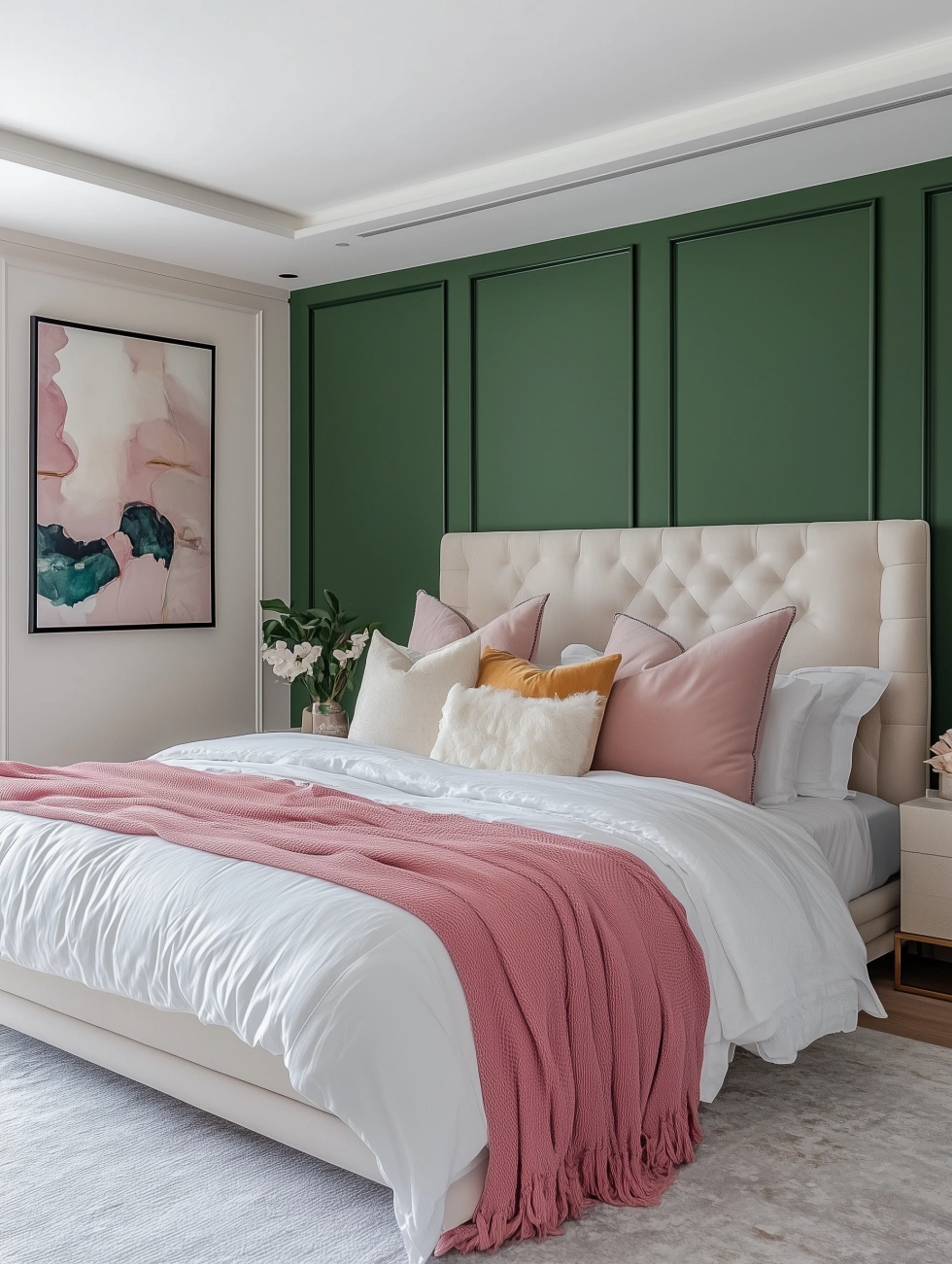
Choosing the Right Furniture
Selecting appropriate furniture is essential for both aesthetics and functionality. Start with a comfortable bed as the centrepiece of your room. Choose a size that fits your space and sleeping requirements.
Consider multifunctional pieces to maximise space, such as:
- Ottoman beds with built-in storage
- Bedside tables with drawers
- A vanity that doubles as a desk
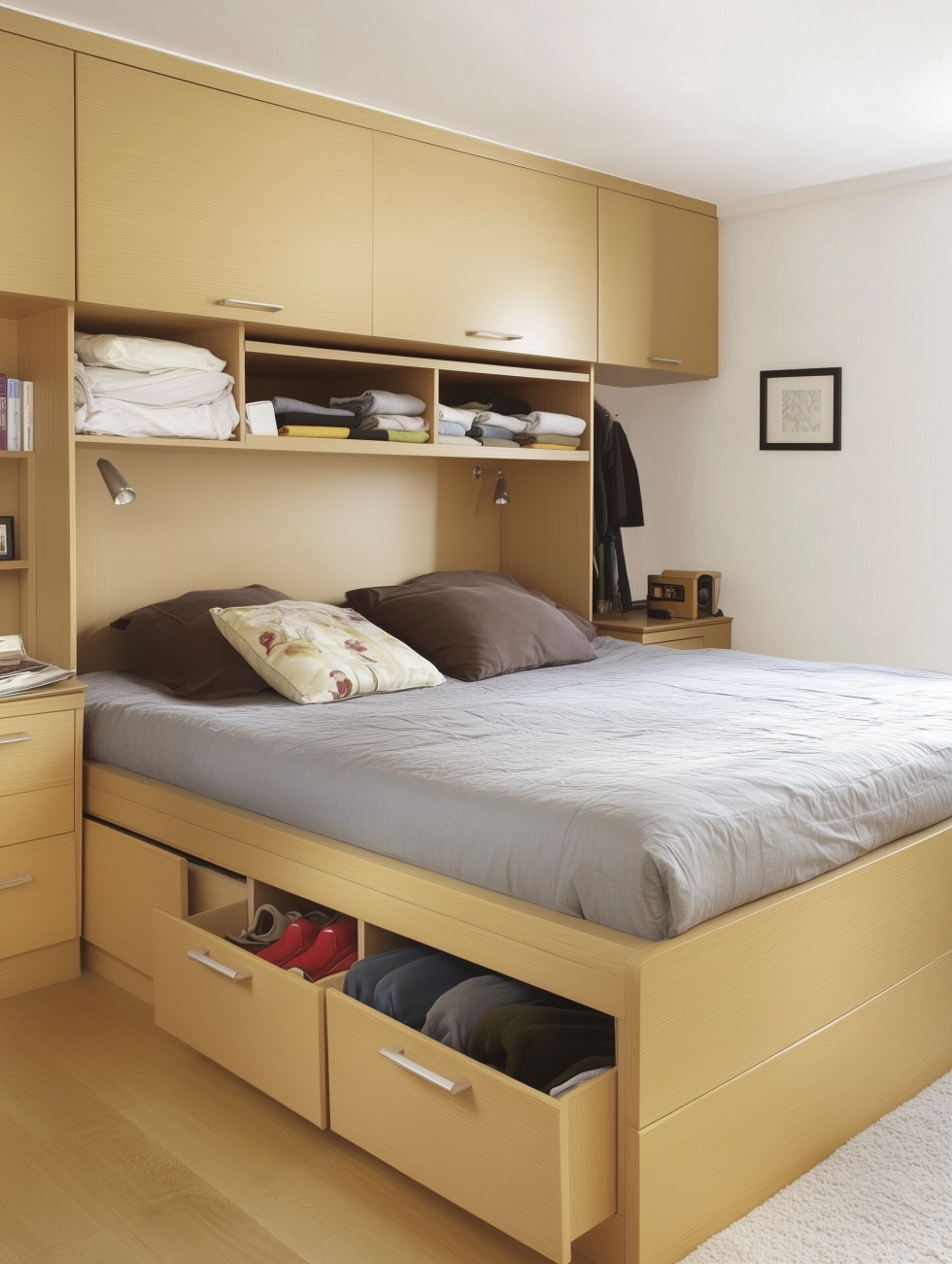
Arrange your furniture to create a natural flow in the room. Ensure there’s enough space to move around comfortably. Place your bed against a solid wall, ideally not under a window, to create a sense of security.
When selecting materials, think about durability and how they complement your chosen design style. Wood offers warmth, while metal can provide a modern touch.
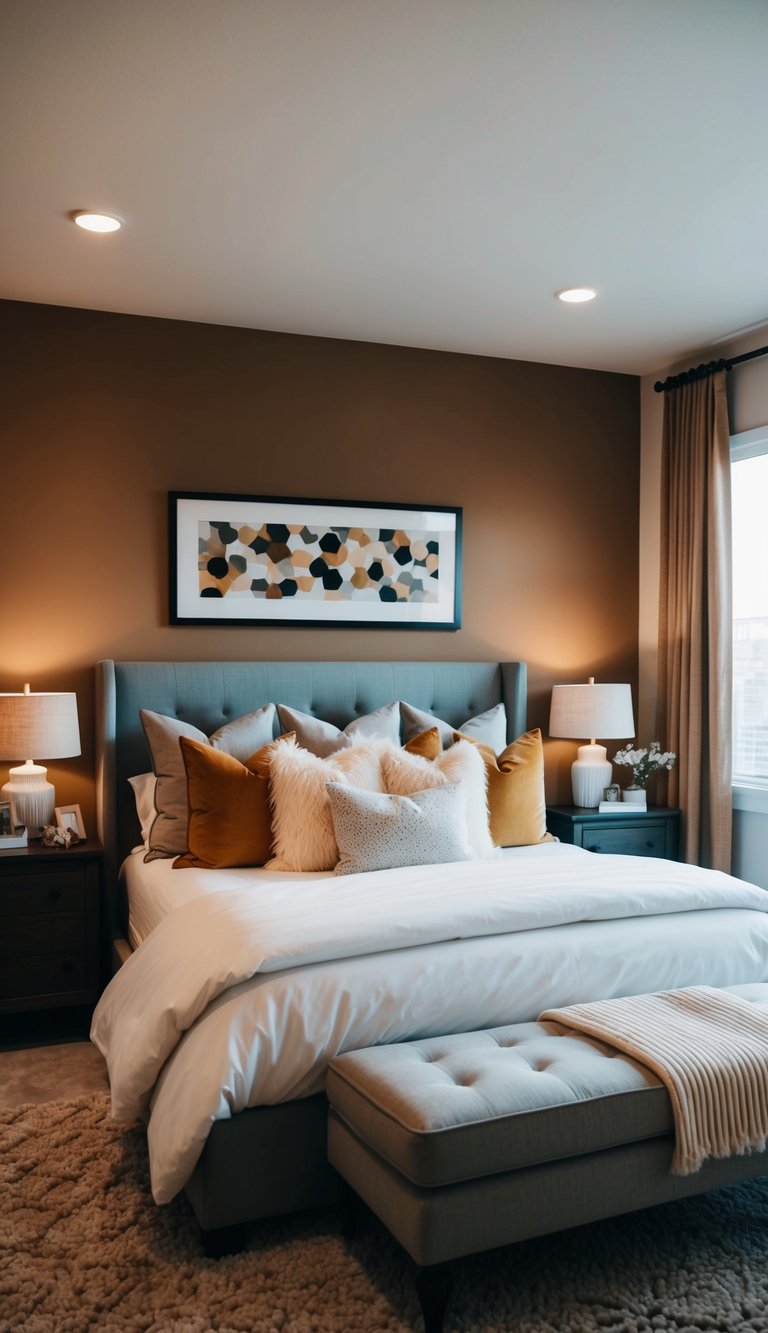
Lighting: Setting the Mood
Proper lighting is crucial for creating the right ambiance in your bedroom. Layer different types of lighting to cater to various needs and times of day.
- Ambient lighting: Use ceiling fixtures or recessed lights to provide overall illumination.
- Task lighting: Include bedside lamps or wall sconces for reading or other activities.
- Accent lighting: Highlight artwork or architectural features with spotlights or LED strips.
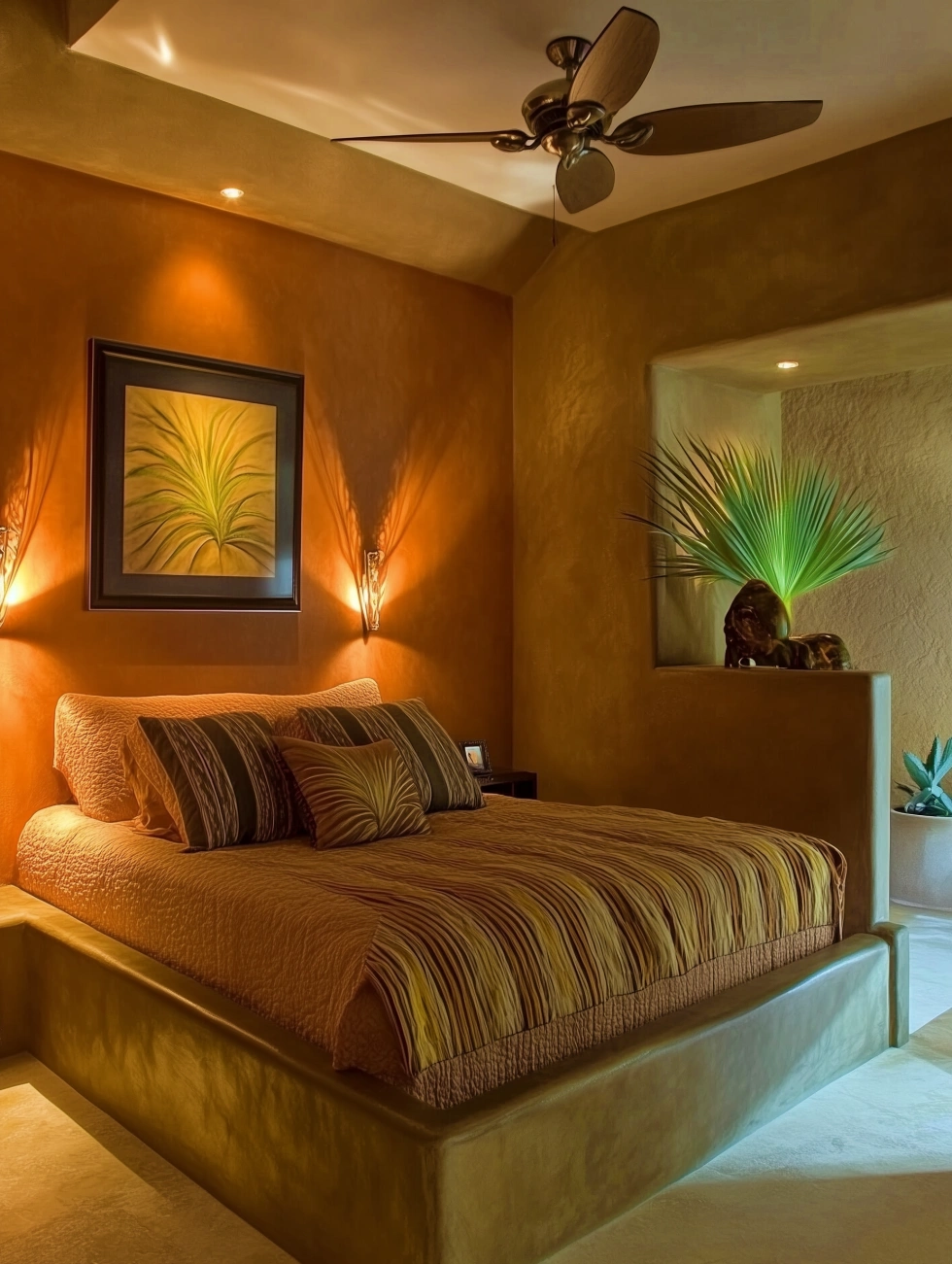
Consider installing dimmer switches to adjust light levels easily. This allows you to create a soft, relaxing atmosphere in the evening and brighter light when needed during the day.
Natural light is also important. Choose window treatments that allow you to control the amount of daylight entering your room. Blackout curtains can be beneficial for those who are light-sensitive or work night shifts.
Decor Themes and Styles
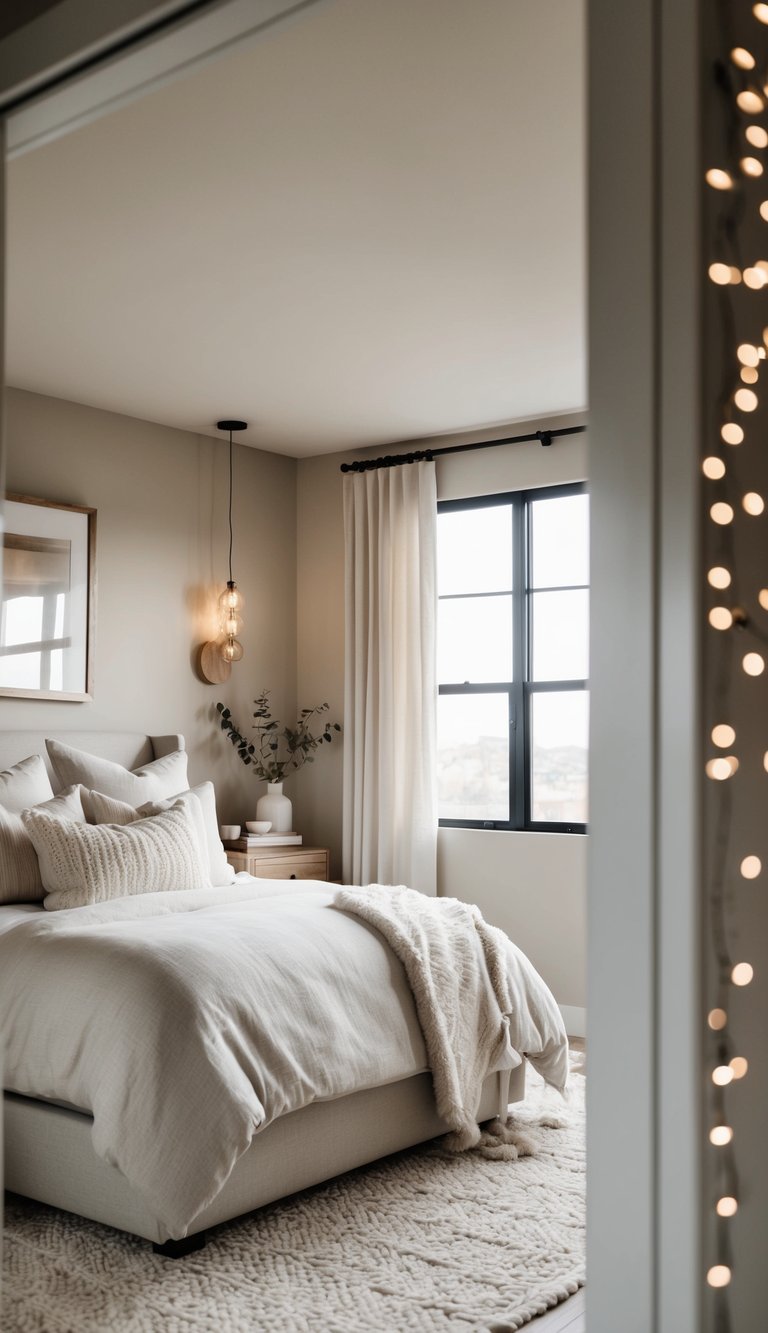
Choosing a decor theme or style sets the foundation for your bedroom’s overall look and feel. The right approach can transform your space into a personal sanctuary that reflects your tastes and promotes relaxation.
Contemporary Versus Classic Choices
When designing your bedroom, you’ll need to decide between contemporary and classic styles. Contemporary decor embraces clean lines, minimalism, and up-to-date trends. It often features neutral colour palettes with bold accents, sleek furniture, and innovative lighting.
Classic styles, on the other hand, exude timeless elegance. They typically include rich wood tones, ornate details, and traditional patterns. Antique or vintage-inspired furniture pieces are common in classic bedrooms.
To blend both, consider a transitional style. This approach combines contemporary and classic elements, creating a balanced and versatile look. You might pair a tufted headboard with modern bedside tables, for instance.

Thematic Decor and Colour Schemes
Selecting a theme or colour scheme can unify your bedroom’s design. Popular themes include:
- Coastal: Light blues, whites, and sandy beiges
- Bohemian: Rich colours, patterns, and textures
- Industrial: Raw materials, exposed elements, and muted tones
- Scandinavian: Light woods, whites, and soft neutrals
Your colour scheme should reflect the mood you want to create. Soft, cool tones like blues and greens promote relaxation. Warm hues like reds and oranges can make the space feel cosy and intimate.
Consider using the 60-30-10 rule: 60% dominant colour, 30% secondary colour, and 10% accent colour. This creates a balanced and visually appealing space.
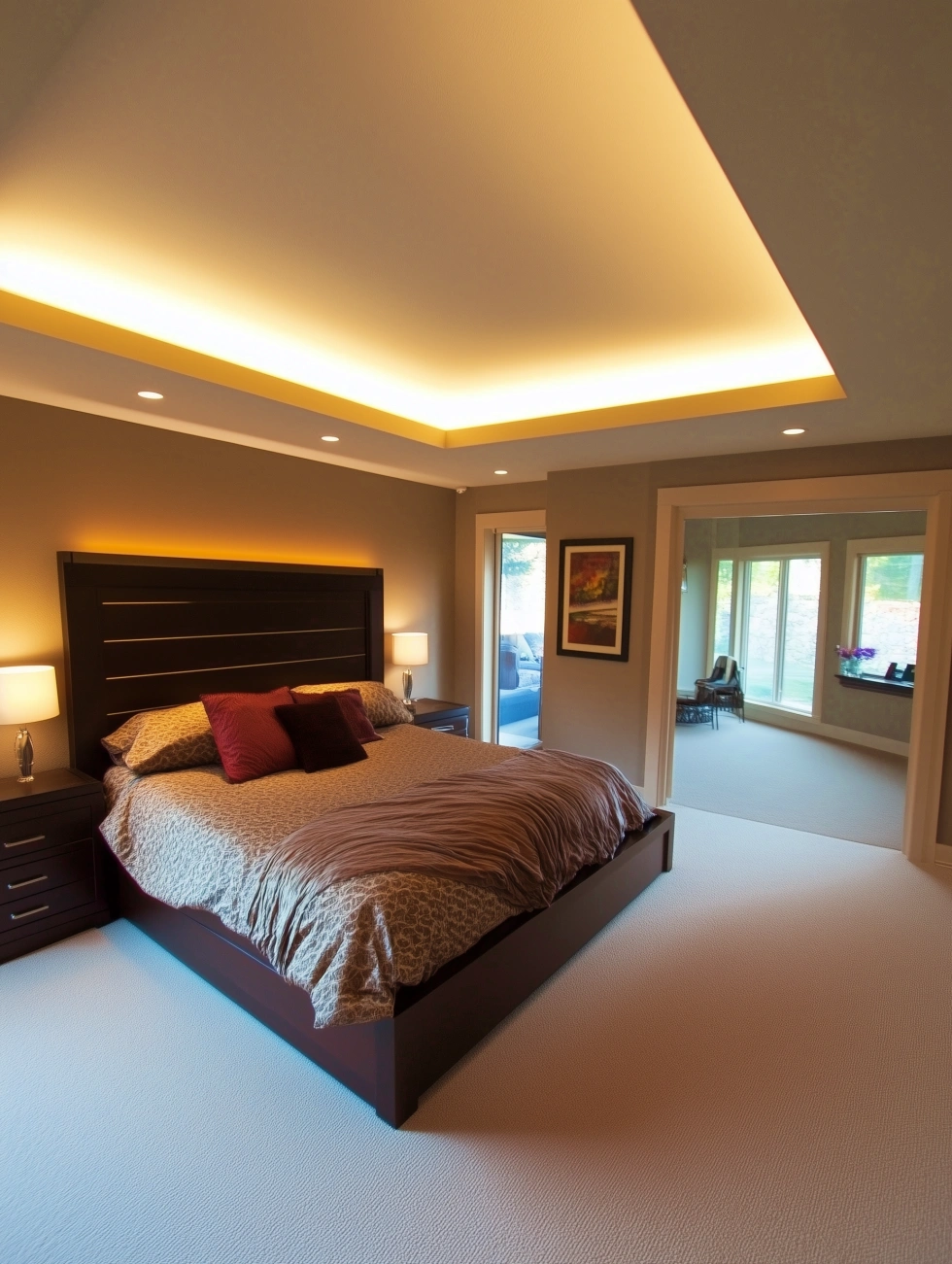
Minimalist Design Principles
Minimalist bedrooms focus on simplicity and functionality. Key principles include:
- Decluttering: Keep only essential items visible
- Neutral colours: Whites, greys, and earth tones dominate
- Simple furniture: Clean lines and unadorned surfaces
- Quality over quantity: Invest in fewer, high-quality pieces
To create a minimalist oasis, opt for built-in storage to reduce visual clutter. Choose a low-profile bed and streamlined nightstands. Use textiles sparingly, focusing on high-quality materials like linen or cotton.
Lighting plays a crucial role in minimalist design. Opt for simple fixtures that provide ample illumination without dominating the space. Natural light is especially important, so consider sheer curtains to maximise daylight.
Decorative Details and Accessories
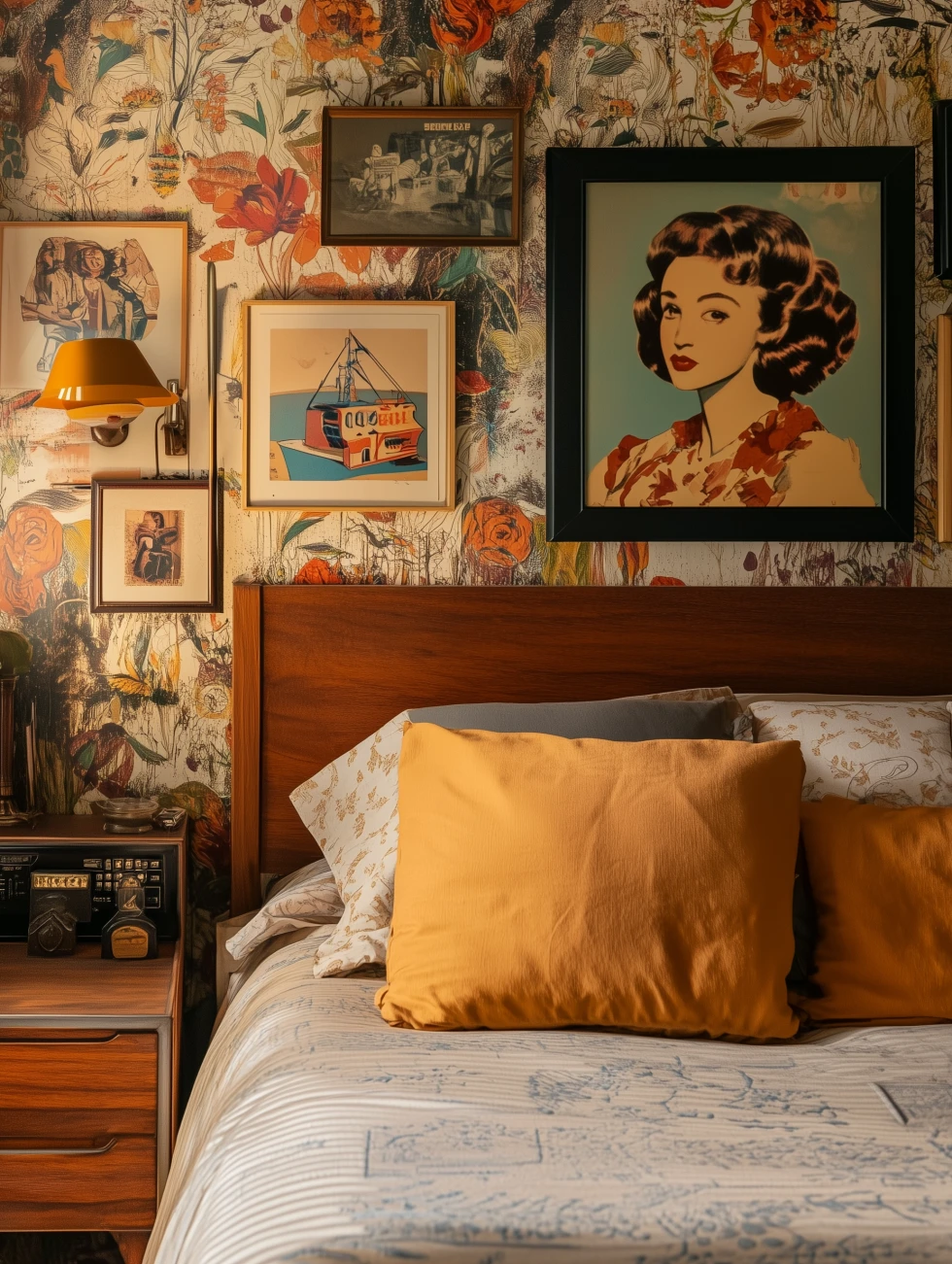
The finishing touches in your bedroom can truly elevate the space. Carefully chosen artwork, textiles, and accessories add personality and create a cohesive look.
Artwork and Wall Decor
Selecting the right artwork and wall decor is crucial for personalising your bedroom. Create an eye-catching gallery wall to make your space feel sophisticated and luxurious. Mix different frame sizes and styles for visual interest.
Consider oversized statement pieces to serve as a focal point. Abstract paintings or large-scale photographs can add drama and colour to plain walls.
For a more subtle approach, hang a series of botanical prints or black and white photographs. These create a calming atmosphere perfect for a restful bedroom.
Don’t forget about three-dimensional wall decor. Mirrors, wall sculptures, or even hanging plants can add depth and texture to your walls.
Textiles and Tactile Elements
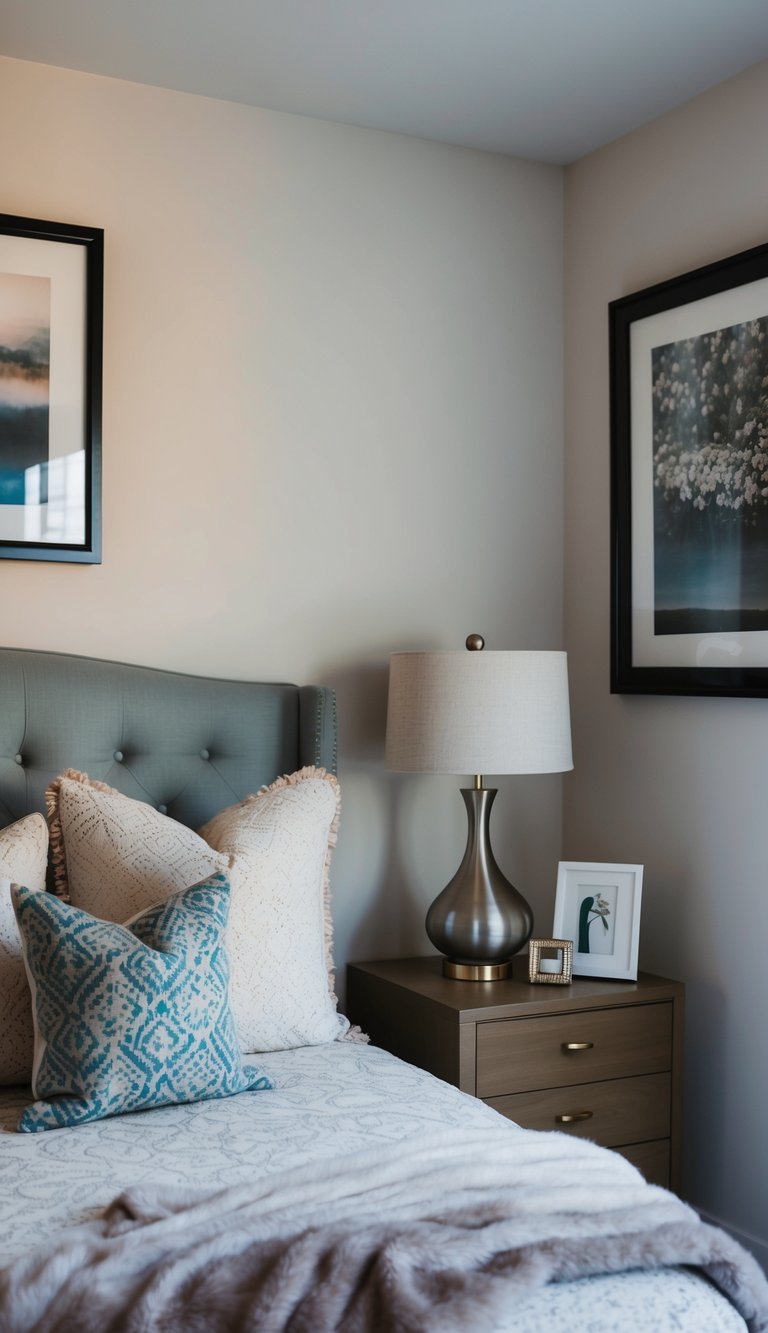
Textiles play a vital role in creating a cosy and inviting bedroom atmosphere. Start with your bedding – choose high-quality sheets and a duvet cover in colours that complement your overall scheme.
Layer different textures to add visual and tactile interest. Mix smooth cotton with chunky knits or silky fabrics with nubby wools. Throw pillows and blankets are perfect for introducing pops of colour or pattern.
Consider adding a plush area rug to soften hard flooring and define the space around your bed. This adds warmth underfoot and helps absorb sound for a more peaceful environment.
Window treatments are another opportunity to introduce texture. Layered curtains or roman blinds in sumptuous fabrics can enhance the overall luxurious feel of your bedroom.
Accessorising with Plants and Books
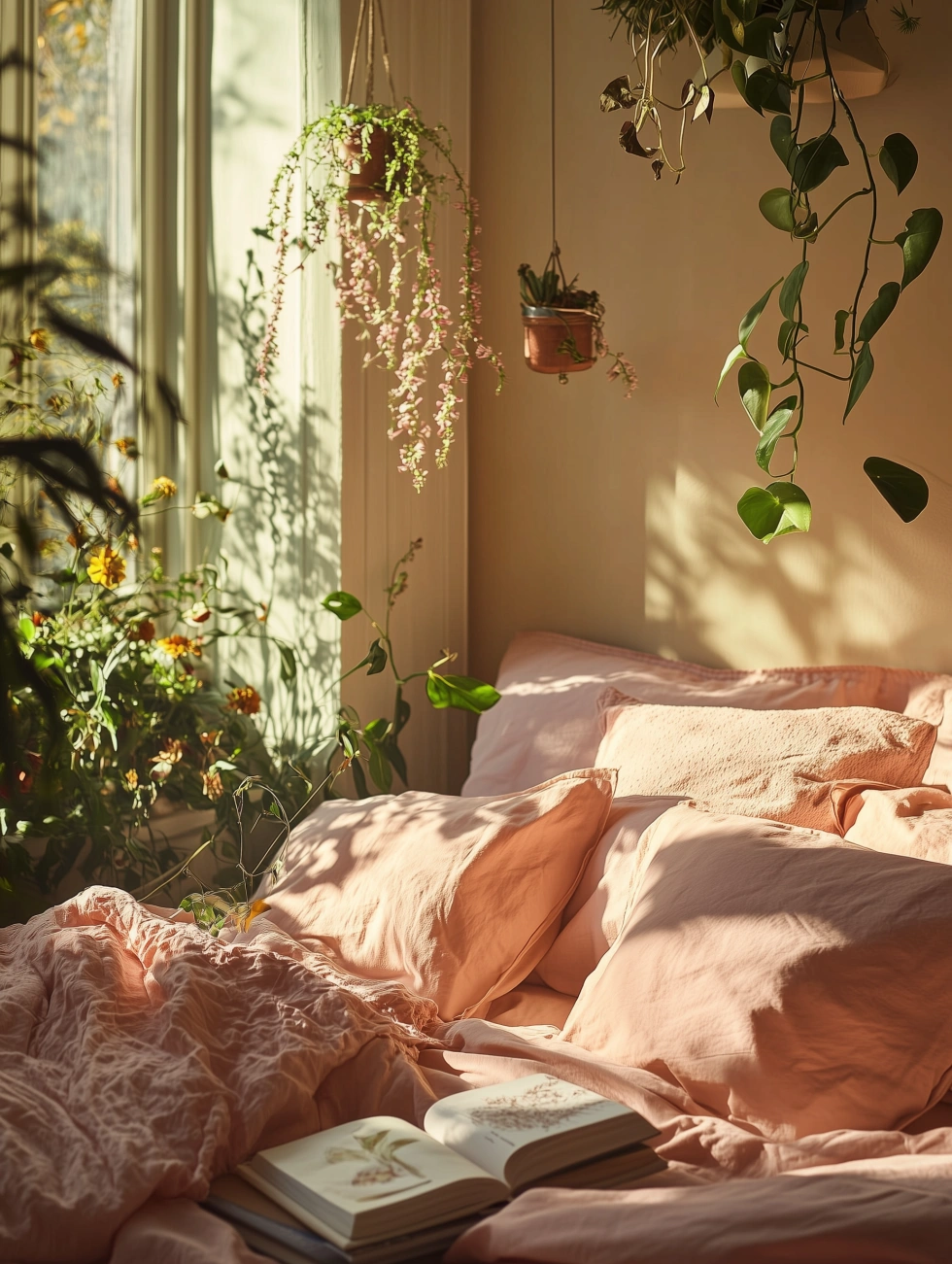
Introducing greenery to your bedroom creates a fresh and inviting atmosphere. Choose plants that thrive in low-light conditions, such as snake plants, pothos, or peace lilies.
Place larger plants in floor-standing pots to fill empty corners. Smaller plants on bedside tables or dressers add a touch of nature at eye level.
Books are both decorative and functional accessories. Stack a few visually appealing hardcovers on your nightstand or arrange them on floating shelves.
Create a cosy reading nook with a comfortable chair, a small side table, and a stylish floor lamp. This provides a dedicated space for relaxation and unwinding with your favourite reads.
Remember to keep your accessories curated and purposeful. Too many items can create visual clutter, so choose pieces that truly reflect your style and personality.
